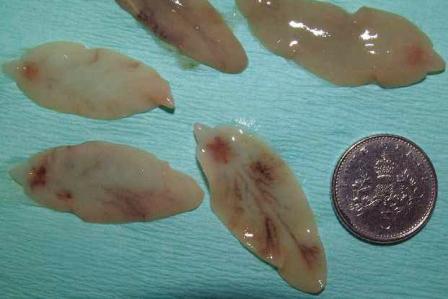Liver Fluke – Actions To Consider This Spring
30 March 2022In spring 2021 a number of flocks experienced ill thrift and/or deaths in ewes as a result of infection with liver fluke (Fasciola hepatica). In all cases there was a history of treatment with triclabendazole during the previous autumn and winter. These fluke burdens would have been easily diagnosed by carrying out a bulk fluke egg count or coproantigen test on the group. Undiagnosed liver fluke in late pregnancy could have consequences such as problems with metabolic disease or effects on colostrum quality and lamb viability. Monitoring for liver fluke infection is recommended at this time of year, particularly if ewes are leaner than usual.
In addition, liver fluke eggs passed in faeces at this time of year can contribute to the fluke challenge in autumn. Treating to kill adult fluke in spring/early summer can therefore help to reduce liver fluke risk in the back end. You need to take into account how stock have been managed, when they were last treated, and what product was used. To avoid unnecessary use of medicines, collect individual faecal samples from 10 animals. These can be pooled and tested to check whether or not liver fluke are present. If infection is confirmed treat with a product that will kill adult liver fluke. To prevent overuse do not use products containing triclabendazole at this time of year (see below for the exception to this rule). Seek advice if you are unsure of the best time to test or which product to use.
If ewes are housed pre- lambing, and fluke infection is confirmed, this can be a convenient time to assess whether or not triclabendazole is effective on your farm.
- Weigh and mark up to ten sheep.
- Collect faeces from each animal and place in individually labelled pots.
- Check that the dosing gun is accurate.
- Administer the correct dose of product.
- Submit samples for coproantigen ELISA testing.
- Two weeks later collect faeces from the same animals and repeat the test.
Don’t forget that both housed and outwintered cattle may also be infected with liver fluke. Consider cow body condition in the run up to calving and growth rates in youngstock. Monitor for infection and if appropriate treat before turn-out.
Heather Stevenson, heather.stevenson@sruc.ac.uk
Sign up to the FAS newsletter
Receive updates on news, events and publications from Scotland’s Farm Advisory Service

